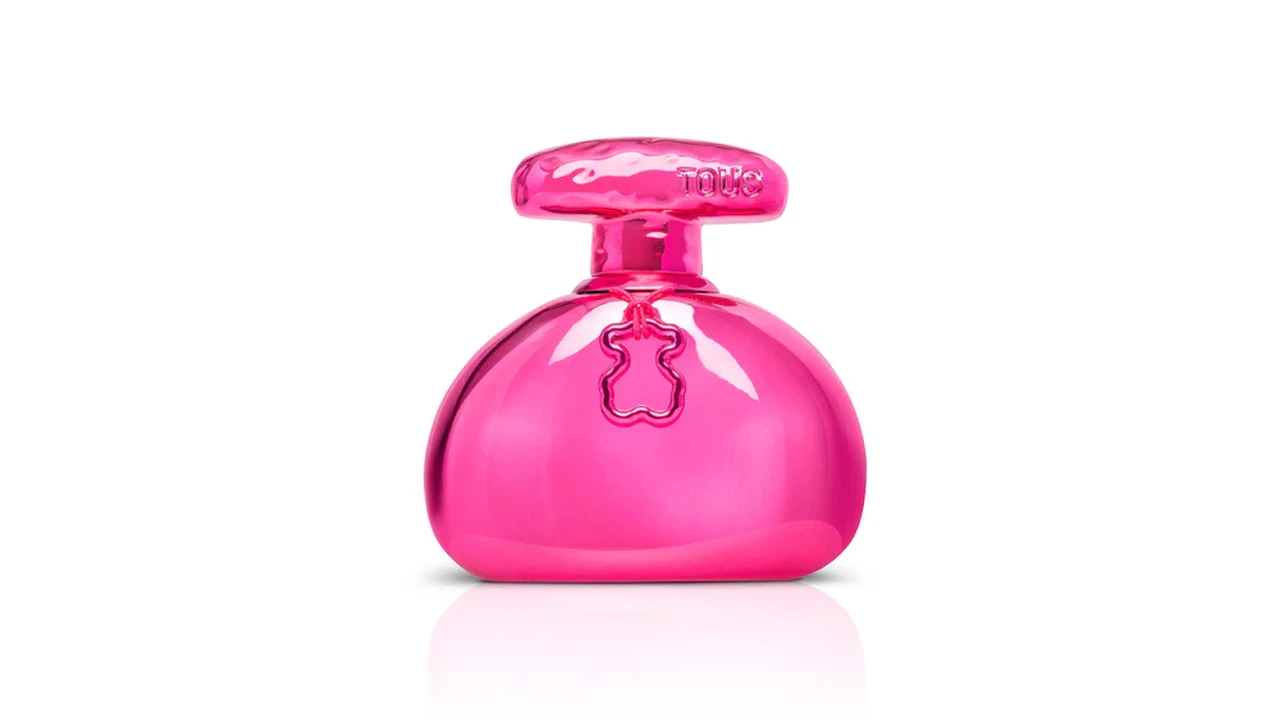3 Essential Bathroom Renovation Mistakes to Avoid
Learn the 3 crucial bathroom renovation mistakes to avoid for a smooth and successful project. Save time and money with these expert tips.

3 Essential Bathroom Renovation Mistakes to Avoid
Embarking on a bathroom renovation can be an exciting journey, promising a fresh, functional, and beautiful space. However, it's also a project fraught with potential pitfalls that can lead to budget overruns, frustrating delays, and ultimately, disappointment. Whether you're a seasoned DIY enthusiast or hiring professionals, being aware of common mistakes can save you a lot of headaches, time, and money. In this comprehensive guide, we're going to dive deep into three crucial bathroom renovation mistakes that homeowners frequently make and, more importantly, how to avoid them. We'll also recommend specific products, discuss their applications, compare options, and provide pricing insights to help you make informed decisions.
Mistake 1 Inadequate Planning and Budgeting for Your Bathroom Remodel
One of the biggest blunders in any home improvement project, especially a bathroom renovation, is insufficient planning and an unrealistic budget. Many homeowners jump into demolition without a clear vision, detailed plans, or a financial buffer. This often leads to unexpected costs, design compromises, and a project that drags on far longer than anticipated.
The Pitfalls of Poor Planning and Budgeting in Bathroom Renovations
- Scope Creep: Without a defined plan, it's easy to add features or change materials mid-project, significantly increasing costs and timelines.
- Hidden Costs: Demolition often reveals unforeseen issues like mold, rotten subflooring, or outdated plumbing/electrical systems, which can be expensive to fix.
- Material Delays: Not ordering materials in advance can lead to significant project delays, especially for custom items or popular fixtures.
- DIY Overestimation: Underestimating the complexity of certain tasks can lead to botched jobs, requiring professional intervention and additional expenses.
- Budget Blowouts: Failing to account for labor, permits, disposal fees, and a contingency fund can quickly deplete your savings.
How to Avoid Inadequate Planning and Budgeting for Your Bathroom Project
The key to a successful renovation lies in meticulous planning and a realistic financial outlook. Think of it as building a solid foundation for your dream bathroom.
Step 1 Define Your Bathroom Renovation Vision and Needs
Before you even think about swinging a hammer, clearly define what you want from your new bathroom. Consider:
- Functionality: Who will use the bathroom? What are their specific needs? (e.g., accessibility features, double vanity for couples, a large tub for relaxation).
- Style: What aesthetic are you aiming for? (e.g., modern, traditional, minimalist, farmhouse). Collect inspiration from magazines, Pinterest, and Houzz.
- Layout: Are you keeping the existing layout or moving fixtures? Moving plumbing can be a significant cost driver.
- Must-Haves vs. Nice-to-Haves: Prioritize your desires. What can you absolutely not live without, and what would be a bonus if the budget allows?
Step 2 Create a Detailed Bathroom Renovation Plan and Timeline
Once your vision is clear, translate it into a detailed plan. This might involve:
- Drawing a Floor Plan: Even a rough sketch can help visualize the space and identify potential issues. Consider hiring a designer for complex layouts.
- Selecting Materials and Fixtures: Choose everything from tiles and paint colors to faucets and lighting fixtures upfront. Get samples to see how they look in your space.
- Obtaining Quotes: Get multiple quotes from contractors, plumbers, and electricians. Ensure they are detailed and include all aspects of the work.
- Permits: Understand what permits are required in your area. Failing to obtain necessary permits can lead to fines and rework.
- Timeline: Establish a realistic timeline for each phase of the project, including material delivery.
Step 3 Develop a Realistic Bathroom Renovation Budget and Contingency
This is where many projects go awry. Your budget should be comprehensive and include:
- Materials: Tiles, flooring, vanity, toilet, shower/tub, faucets, lighting, paint, etc.
- Labor: Contractor fees, plumber, electrician, tiler, painter.
- Permits: Don't forget these administrative costs.
- Disposal: Costs associated with removing old fixtures and construction debris.
- Contingency Fund: This is CRUCIAL. Allocate 10-20% of your total budget for unexpected issues. This buffer will save you from financial stress when surprises inevitably arise.
Recommended Budgeting Tools and Resources for Bathroom Remodels
- Online Budget Calculators: Websites like HomeAdvisor or Remodelista offer calculators to estimate costs based on your location and project scope.
- Spreadsheets: Create a detailed spreadsheet to track every expense.
- Contractor Estimates: A good contractor will provide a detailed breakdown of costs.
Mistake 2 Neglecting Proper Ventilation and Waterproofing in Bathroom Design
Bathrooms are inherently wet environments. Failing to address proper ventilation and waterproofing can lead to serious long-term problems like mold growth, structural damage, and compromised indoor air quality. This mistake is often overlooked because the consequences aren't immediately visible, but they can be costly and unhealthy down the line.
The Dangers of Poor Ventilation and Waterproofing in Bathrooms
- Mold and Mildew: Excessive moisture creates a perfect breeding ground for mold, which can cause respiratory issues and damage surfaces.
- Structural Damage: Water seeping into walls and subflooring can rot wood, weaken structures, and lead to expensive repairs.
- Peeling Paint and Wallpaper: High humidity causes finishes to deteriorate prematurely.
- Unpleasant Odors: Stale, damp air can lead to persistent musty smells.
- Reduced Lifespan of Materials: Constant exposure to moisture shortens the life of fixtures and finishes.
How to Ensure Excellent Ventilation and Waterproofing for Your Bathroom
Investing in these areas during renovation is an investment in the longevity and health of your home.
Step 1 Install an Adequate Bathroom Exhaust Fan System
An exhaust fan is your first line of defense against moisture. Don't just replace an old, noisy fan with another inadequate one. Consider the size of your bathroom and choose a fan with an appropriate CFM (Cubic Feet per Minute) rating. A general rule of thumb is 1 CFM per square foot of bathroom area, with a minimum of 50 CFM for smaller bathrooms. For bathrooms over 100 square feet, calculate 1 CFM per square foot for the first 100 square feet, then add 50 CFM for each additional toilet, shower, or tub.
Recommended Bathroom Exhaust Fan Products and Comparison
- Panasonic WhisperCeiling DC Fan (FV-0511VQ1):
- Features: Ultra-quiet operation (as low as 0.3 sones), energy-efficient DC motor, variable speed control, SmartFlow technology for optimal CFM.
- Use Case: Ideal for larger bathrooms (up to 110 sq ft) where quiet operation and energy efficiency are priorities.
- Price: ~$180 - $250 USD
- Broan-NuTone SensAire Humidity Sensing Fan (SPK80L):
- Features: Built-in humidity sensor automatically turns the fan on/off, integrated LED light, quiet operation (1.0 sones).
- Use Case: Perfect for homeowners who want automated moisture control and don't want to remember to turn the fan on. Suitable for medium-sized bathrooms (up to 80 sq ft).
- Price: ~$120 - $180 USD
- Delta BreezSignature G2 Series (GBR80):
- Features: DC brushless motor for extended reliability, quiet operation (1.0 sones), energy-efficient.
- Use Case: A solid, reliable, and energy-efficient option for standard-sized bathrooms (up to 80 sq ft) looking for good performance without breaking the bank.
- Price: ~$90 - $140 USD
Comparison: Panasonic offers the quietest and most advanced features, making it a premium choice. Broan-NuTone's humidity sensor adds convenience, while Delta Breez provides excellent value and reliability for its price point. Ensure the fan is vented directly outside, not into the attic, to prevent moisture buildup in your home's structure.
Step 2 Implement Robust Bathroom Waterproofing Systems
Waterproofing isn't just about tiling; it's about creating a continuous barrier that prevents water from penetrating surfaces, especially in shower areas and around tubs.
Recommended Waterproofing Products and Comparison
- Schluter-KERDI Shower System:
- Features: A complete system including waterproof membranes (KERDI), shower trays, curbs, and drains. It creates a fully sealed, monolithic waterproof assembly.
- Use Case: Ideal for custom tile showers, curbless showers, and steam showers. Provides superior waterproofing and vapor management.
- Price: Varies significantly based on shower size, but a typical 3x5 shower kit might range from ~$500 - $1000+ USD (materials only).
- RedGard Waterproofing and Crack Prevention Membrane:
- Features: A liquid-applied, elastomeric membrane that forms a seamless, flexible barrier. Easy to apply with a roller or brush.
- Use Case: Excellent for waterproofing shower walls, floors, and other wet areas before tiling. Also provides crack isolation.
- Price: ~$50 - $70 USD per gallon (covers approx. 100 sq ft with two coats).
- Custom Building Products RedGard Fabric Reinforcement Membrane:
- Features: A non-woven fabric used in conjunction with liquid membranes like RedGard to reinforce corners, seams, and changes in plane, providing extra protection against cracks and leaks.
- Use Case: Essential for critical areas in any liquid-applied waterproofing system, especially in shower corners and where walls meet floors.
- Price: ~$15 - $25 USD per roll (typically 6 inches wide by 75 feet long).
Comparison: The Schluter-KERDI system is a premium, integrated solution offering the highest level of protection and ease of installation for a complete shower. RedGard is a highly effective and more budget-friendly liquid membrane for general waterproofing, especially when combined with the fabric reinforcement for critical areas. Always follow manufacturer instructions meticulously for proper application.
Mistake 3 Overlooking Ergonomics and Practicality in Bathroom Design
A beautiful bathroom is great, but a functional and comfortable one is even better. Many homeowners get caught up in aesthetics and forget about the practical aspects of daily use. This can lead to a bathroom that looks good but is frustrating to use, with awkward layouts, insufficient storage, or poor lighting.
The Consequences of Ignoring Ergonomics and Practicality in Bathroom Renovations
- Awkward Layouts: Too little space between fixtures, doors hitting vanities, or toilets placed in uncomfortable positions.
- Insufficient Storage: A lack of places to store toiletries, towels, and cleaning supplies leads to clutter.
- Poor Lighting: Inadequate or improperly placed lighting can make tasks like shaving or applying makeup difficult.
- Uncomfortable Fixtures: Choosing a toilet that's too low, a vanity that's too high, or a showerhead that's not adjustable.
- Difficult Cleaning: Materials or designs that are hard to clean, leading to more maintenance effort.
How to Design an Ergonomic and Practical Bathroom Space
Prioritize how you'll actually use the space every day.
Step 1 Optimize Bathroom Layout and Clearances
Adhere to standard clearances for comfortable use. For example:
- Toilet Clearance: At least 15 inches from the center of the toilet to any side wall or obstruction, and 21 inches of clear space in front.
- Vanity Height: Standard vanity height is 32-34 inches, but comfort height (36 inches) is increasingly popular.
- Shower Size: A minimum of 30x30 inches, but 36x36 inches or larger is much more comfortable.
- Door Swings: Ensure doors don't obstruct fixtures or traffic flow. Consider pocket doors or barn doors for small bathrooms.
Step 2 Incorporate Smart Bathroom Storage Solutions
Think vertically and creatively to maximize storage without cluttering the space.
Recommended Bathroom Storage Products and Comparison
- Medicine Cabinets (Recessed vs. Surface Mount):
- Recessed: Sits flush with the wall, offering a sleek look and saving space. Requires cutting into the wall.
- Surface Mount: Easier to install, but protrudes from the wall. Often offers more storage depth.
- Product Example: Kohler Verdera Medicine Cabinet (recessed or surface mount options). Features adjustable shelves, mirrored interior, and optional electrical outlets.
- Price: ~$200 - $600+ USD depending on size and features.
- Floating Vanities with Drawers:
- Features: Mounted to the wall, leaving floor space clear, which makes the bathroom feel larger and easier to clean. Drawers offer organized storage.
- Product Example: Fresca Mezzo 36-inch Wall Mounted Vanity. Offers soft-closing drawers and a sleek modern design.
- Price: ~$500 - $1500+ USD (vanity base only).
- Shower Niches and Shelves:
- Features: Built-in recesses in the shower wall for shampoo, soap, etc. Eliminates the need for caddies.
- Product Example: Schluter-KERDI-BOARD-SN Shower Niche. Pre-fabricated, waterproof, and ready for tile. Available in various sizes.
- Price: ~$50 - $150 USD per niche (materials only).
Comparison: Recessed medicine cabinets are great for minimalist aesthetics. Floating vanities offer both style and practical storage, enhancing the sense of space. Shower niches are a must-have for a clean, organized shower area.
Step 3 Design Effective Bathroom Lighting Layers
Good lighting is crucial for both functionality and ambiance. Think in layers:
- Task Lighting: Bright, shadow-free lighting around the vanity mirror for grooming. Sconces on either side of the mirror are often better than an overhead light.
- Ambient Lighting: General illumination for the entire room, often from a ceiling fixture.
- Accent Lighting: For highlighting architectural features or creating mood (e.g., dimmable lights, toe-kick lighting).
Recommended Bathroom Lighting Products and Comparison
- LED Vanity Sconces (Task Lighting):
- Features: Energy-efficient, long-lasting, and provide excellent color rendering. Look for fixtures with a color temperature of 3000K-4000K for natural light.
- Product Example: Kichler Erzo LED Vanity Sconce. Modern design, dimmable, and provides even light distribution.
- Price: ~$80 - $200 USD per sconce.
- Recessed LED Downlights (Ambient Lighting):
- Features: Provide general illumination without being obtrusive. Dimmable options allow for mood control.
- Product Example: Philips Hue White and Color Ambiance Smart Recessed Downlight. Offers tunable white light and millions of colors, smart control.
- Price: ~$50 - $80 USD per light (smart options higher).
- LED Strip Lighting (Accent Lighting):
- Features: Flexible strips that can be hidden under floating vanities, behind mirrors, or in shower niches to create subtle accent lighting.
- Product Example: Govee LED Strip Lights. Affordable, easy to install, and often smart-enabled for color and brightness control.
- Price: ~$20 - $50 USD per roll.
Comparison: Dedicated LED vanity sconces are superior for task lighting compared to a single overhead light. Recessed downlights offer clean ambient light, and smart options like Philips Hue add versatility. LED strip lighting is a cost-effective way to add modern accent lighting.
By diligently avoiding these three common bathroom renovation mistakes – inadequate planning and budgeting, neglecting proper ventilation and waterproofing, and overlooking ergonomics and practicality – you'll be well on your way to creating a bathroom that is not only beautiful but also highly functional, durable, and a joy to use for years to come. Remember, a successful renovation is built on careful consideration and smart choices from the very beginning.
:max_bytes(150000):strip_icc()/277019-baked-pork-chops-with-cream-of-mushroom-soup-DDMFS-beauty-4x3-BG-7505-5762b731cf30447d9cbbbbbf387beafa.jpg)






